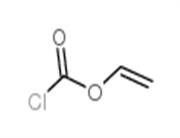Description
CZC24832 is a highly selective and potent PI3Kγ inhibitor (IC50=27 nM) with apparent dissociation constants (Kdapp) of 19 nM.
Related Catalog
Research Areas >> Inflammation/Immunology
Target
PI3Kγ:27 nM (IC50)
PI3Kβ:1.1 μM (IC50)
PI3Kδ:8.194 μM (IC50)
In Vitro
CZC24832 is active in PI3Kγ-dependent cellular C5a-induced AKT Ser473 phosphorylation (IC50=1.2 μM) and N-formyl-methionine-leucinephenylalanine (fMLP)-induced neutrophil migration assays (IC50=1.0 μM)[1].
In Vivo
CZC24832 shows suitable pharmacokinetic properties including low clearance (0.84 L per h per kg body weight) and high oral bioavailability (37%), thus allowing further characterization of the inhibitor in rodent models of inflammation. In an IL-8-dependent air pouch model, CZC24832 shows a dose-dependent reduction of granulocyte recruitment (80% inhibition at 10 mg per kg body weight) consistent with the degree of inhibition observed in PI3Kγ-null mice. Mice treated orally with 10 mg CZC24832 per kg body weight twice per day show a substantial decrease of bone and cartilage destruction (53% reduction by histopathological analysis) as well as of overall clinical parameters (38% reduction)[1].
Cell Assay
RAW264.7 or THP-1 cells are starved for 2.5 h in serum-free medium before CZC24832 (0.1, 1, 10 and 100 μM) incubation for 30 min at 37°C. RAW264.7 cells are then stimulated for 3 min with C5a at a concentration of 0.6 μM, and THP-1 cells are stimulated with either insulin (1 uM, 10 min) or CSF (50 μg/mL, 5 min) at 37°C and lysed on ice. The detection of AKT phosphorylation (Ser473) is performed using the iBlot system[1].
Animal Admin
Rats[1] Pharmacokinetics and oral bioavailability of CZC24832 are investigated in male Wistar rats following administration of a single intravenous (0.2 mg per kg body weight) or oral dose (10 mg per kg body weight). The dosing vehicle used is 0.5% (w/v) carboxymethyl cellulose in water for oral gavage. The intravenous dosing vehicle is 10% (v/v) DMSO in 30% (v/v) polyethylene glycol (PEG-400). Heparin blood for pharmacokinetic analysis is withdrawn retro-orbitally from mice or sublingually from rats to prepare plasma samples. These are homogenized with 10% (v/v) water and 3 volumes of acetonitrile and analyzed for CZC24832 by HPLC-MS/MS.
References
[1]. Bergamini G, et al. A selective inhibitor reveals PI3Kγ dependence of T(H)17 cell differentiation. Nat Chem Biol. 2012 Apr 29;8(6):576-82.

 China
China







